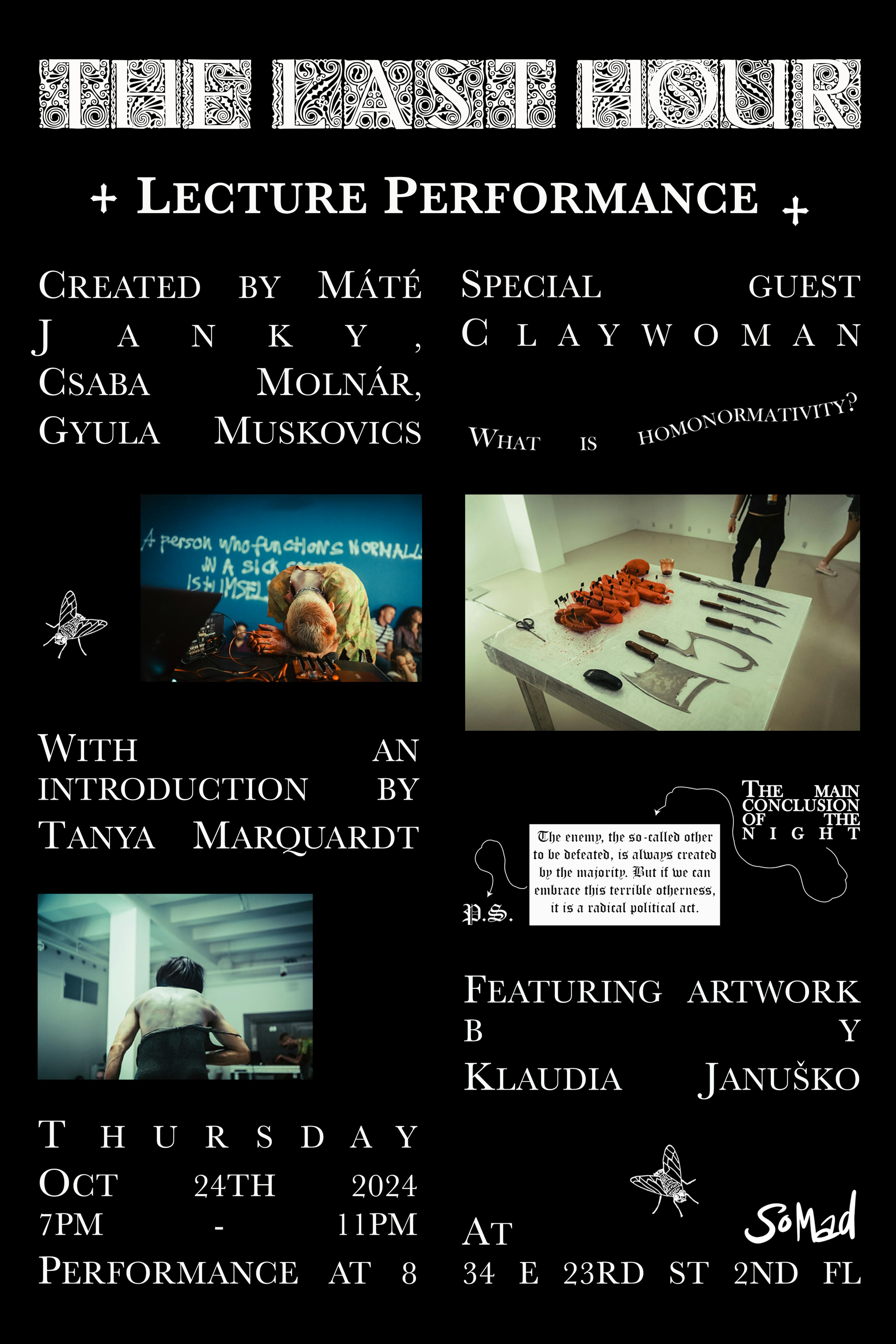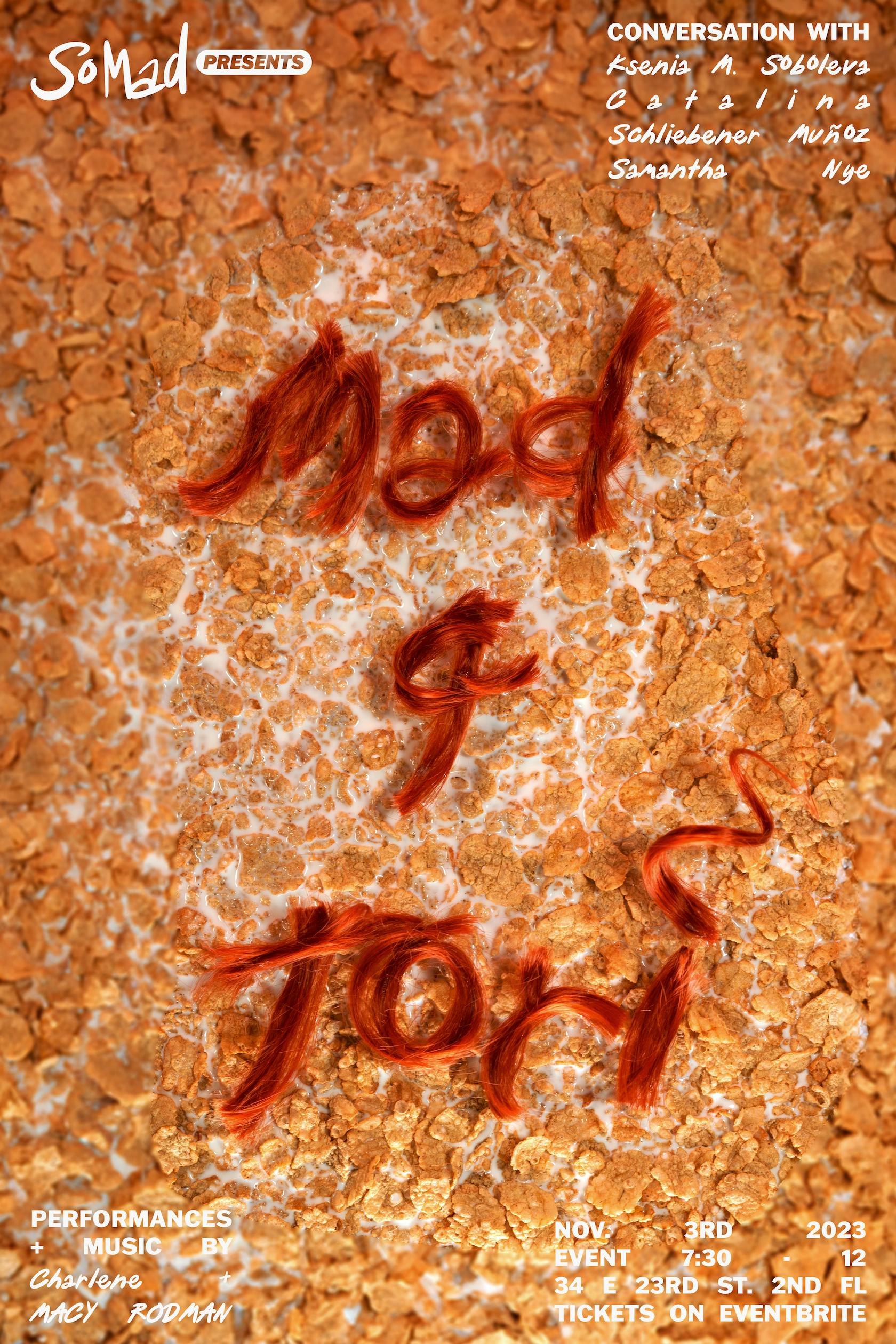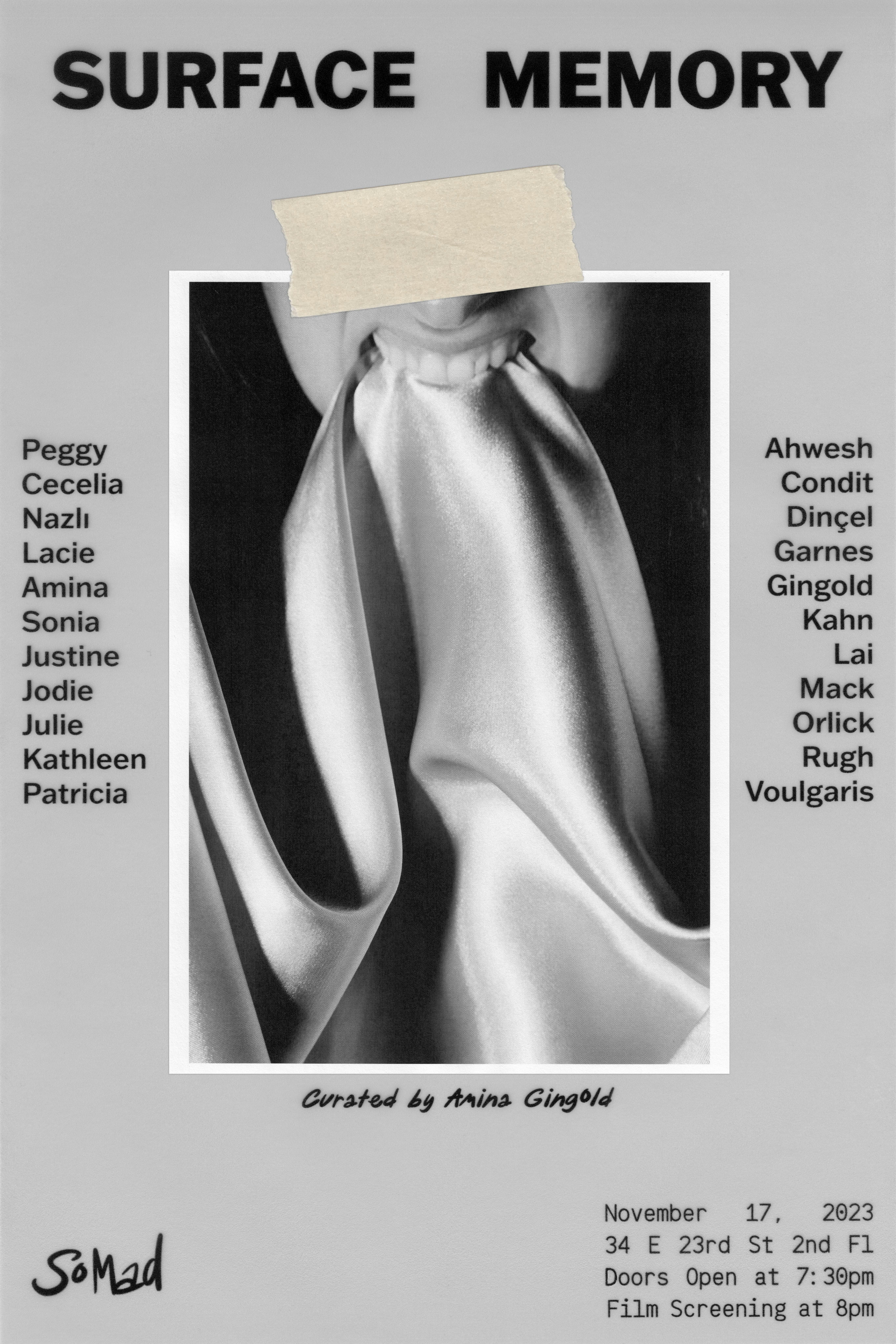The Last Hour is an immersive lecture performance, where theory merges with contemporary dance, drag, video, installation, and experimental noise music. Hungarian artists Máté Janky, Csaba Molnár and Gyula Muskovics explore the position of queer monsters in a homonormative society through film, visual art, and literary references.

The term homonormativity, was coined by Lisa Duggan in the early 2000s, and it refers to the conformist, mainstream gay and lesbian milieu and its politics of assimilation that support heteronormative values. According to Canadian filmmaker Bruce LaBruce, the adoption of such ideals leads to the deradicalization and, therefore, the death of gay culture.
The Last Hour is based on the essay A person who functions normally in a sick society is himself sick, written by Gyula Muskovics. The text analyzes, among many other things, LaBruce's 2008 film Otto; or, Up with dead people. The film's radical feminist character, Medea Yarn, directs a political gay zombie porn film because she believes that it is the only logical response to the toxic reality we are forced to (un)live in. On the one hand, The Last Hour is a tribute to LaBruce's work. On the other, in its next iteration in the United States, the artists will reimagine the figure of the non-conformist monster who does not fit in and leads their one-person revolution against reality, based on stereotypes attached to Eastern Europe, the homeland of the artists, Dracula, and other beasts.
The Last Hour in New York City de-centers hegemonic discourses around gender and sexuality by bringing new knowledge – in the form of a performative workshop – from the so-called periphery to cultural metropolis of the West. Mainstream gay culture, which has indeed separated itself from radical politics, is insensitive not only to social inequalities and the revolutionary potential of queerness but also to the diversity of geopolitical contexts. Thus, in the performance, the artists humorously reach back to the un-emancipated, at times monstrous, and stereotypical character of the Eastern European gay individual, lacking a thorough knowledge of the codes and customs of the “official” gay scene, to see what their audience can learn from this archetype. Eastern European queer monsters, not without exaggeration and irony, will appear in the piece as manifestations of an authentic way of life, in contrast to the gay meat market, where intimacy has become a capital-generating game.
Trigger Warning: This content contains strobe lighting and graphic depictions of violence and gore, which may be disturbing to some viewers. Please proceed with caution.
About the artists
Gyula Muskovics (1988) is a Budapest-based curator, writer, artist and cofounder of the Hollow immersive performance art group. From Fall 2023 to Spring 2024 he was a Fulbright fellow at the Museum of Modern Art and from Fall 2024, he will be a Rosztoczy Foundation fellow at the NYU Special Collections Center in New York City for 6 months. Gyula’s works and publications are motivated by a pull toward the edge and revolve around subversion, queer desire, intimacy, and the political capabilities of the body. He has performed, created and curated events in off-sites, theaters, galleries, and festivals including Trafó House of Contemporary Arts (Budapest, HU), House of Arts (Brno, CZ), MeetFactory (Prague, CZ), radialsystem (Berlin, DE), and Donaufestival (Krems, AT). He is currently a PhD candidate at the Moholy-Nagy University of Art and Design in Budapest. He has given talks at nGbK and Slavs and Tatar’s Pickle Bar in Berlin, the School of Visual Arts in New York and the University of Chicago. He has written essays and articles for The European Journal of Women Studies, DIK Fagazine, CTM Magazine, Kitchen On Mind, and post – MoMA.
Máté Elod Janky (1998) is a Budapest-based musician and visual artist. His work often draws from post-internet practices, found footage, the observation of digital textures and motifs and internet culture hauntology. He is running Daddypower Records, an independent label dedicated to experimental arts, alongside creating site-specific multimedia installations and performing music live. He has been an artist in resident at the House of the Lords of Kunštát (Brno, 2022) and SHAPE Platform (2018) and has shown work or performed at Belvedere 21 (Vienna), Flux Factory (New York), Kunstverein Eisenstadt (Eisenstadt), MeetFactory (Prague), Trafó Gallery (Budapest), U10 (Belgrade), Elektron (Tallinn).
Csaba Molnár (1986) is a performer and choreographer based in Budapest. He began his professional training at the Budapest Contemporary Dance Academy, after which he completed a two-year program at P.A.R.T.S in Brussels. Soon afterward, he joined the Italian Compagnia Virgilio Sieni, and in 2010, he became a member of the Hungarian company Hodworks. Besides his active dancing career since 2008, as a choreographer, he has created works individually and in artistic collaborations. He was commissioned to create work for EN- KNAP Group (Ljubljana), TanzMainz (Mainz), Studio Alta (Prague), Unusual Symptoms-Theater Bremen (Bremen), Sub.Lab.Pro (Budapest). He is the co-creator of seven pieces that have been granted the annual Rudolf Lábán Prize for the best contemporary dance performance of the season in Hungary: Bloom!: City(2011), Dányi-Molnár-Vadas: Skin Me(2014), Tropical Escape (2016), Masterwork(2020), Game Changer(2022), Harmonia (2023). Many of his works have been presented internationally: City, Skin Me, Tropical Escape have been presented at Abrons Arts Center in New York City. Tropical Escape was awarded the prize of “The best foreign performance of the season” in Copenhagen in 2018. He was an artist in residence at Movement Research (New York), Headlands Arts Center (San Francisco), The Royal Opera House (London), Studio Alta (Prague) and Unlock Dancing Plaza (Hongkong). In his work, he strives for reconciling radical extremes. His main interest is to explore how different ways of expression, when juxtaposed, may transform the most private phenomena of human life into a universal and liberating theatrical experience. Lately, with his teacher alter ego Nicole Clore he explores and questions power dynamics, dance and body aesthetics, and hierarchy within the dance education system.
















































































